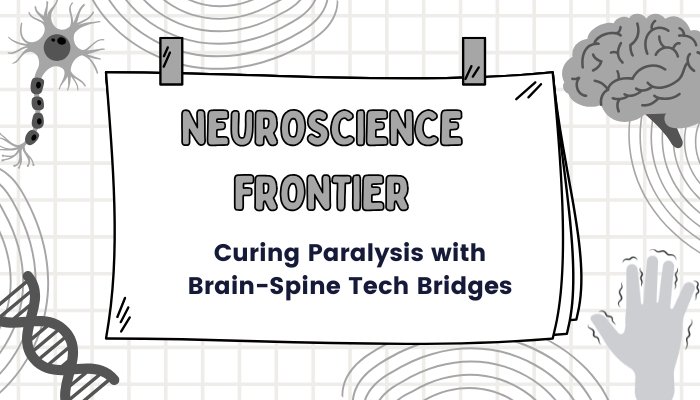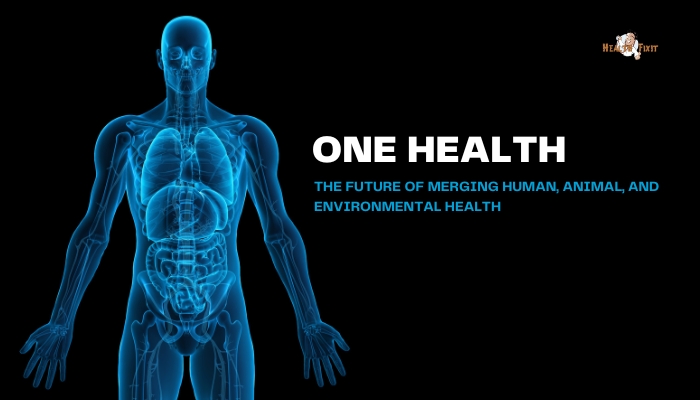Advances in neuroscience and biomedical engineering are transforming the future of paralysis treatment. One of the most groundbreaking innovations is the development of brain-spine interface (BSI) technologies, which create a direct communication “bridge” between the brain and spinal cord. This approach bypasses damaged neural pathways, restoring motor function and offering renewed hope for millions living with paralysis caused by spinal cord injury, stroke, or neurological disease.
Understanding Paralysis and Neural Communication
The human nervous system relies on the brain-spinal cord-muscle circuit to control movement. The brain generates electrical signals that travel down the spinal cord and activate motor neurons, which then stimulate muscles. When the spinal cord is injured, this communication is disrupted, often leading to permanent paralysis.
Traditional rehabilitation methods focus on physical therapy and supportive care, while regenerative medicine explores stem cells and growth factors. However, these treatments have limitations. Brain-spine technology represents a paradigm shift by re-routing the brain’s electrical signals directly to the spinal cord or muscles through implanted devices.
How Brain-Spine Tech Bridges Work
- Brain Signal Acquisition
- Tiny electrodes are implanted in the motor cortex to capture brain activity related to movement intention.
- Non-invasive alternatives, such as EEG, are also under investigation but provide less precision.
- Signal Processing
- Artificial intelligence (AI) and machine learning algorithms decode these brain signals in real-time.
- The algorithms translate thought patterns (e.g., “move right leg”) into electrical instructions.
- Spinal Cord Stimulation
- Implanted electrodes deliver the decoded signals to regions of the spinal cord below the injury.
- This activates dormant motor neurons and triggers muscle contractions.
- Closed-Loop Feedback
- Sensors on muscles and limbs provide feedback, refining the brain-device-spine communication.
- Over time, patients may regain more natural and autonomous movement.
Breakthrough Studies and Clinical Trials
- Swiss researchers (2023) developed a wireless BSI system that allowed a man with complete paralysis to walk again using thought-driven movement.
- BrainGate Consortium has shown patients using brain-computer interfaces (BCIs) can control robotic arms, cursors, and speech synthesizers.
- Clinical studies on epidural electrical stimulation (EES) combined with BSIs have demonstrated remarkable improvements in walking and standing abilities.
These trials show not only restoration of voluntary movement but also potential for neuroplasticity, where the nervous system reorganizes and strengthens residual pathways.
Potential Applications Beyond Walking
- Upper Limb Control – Restoring hand and arm function for daily independence.
- Bladder and Bowel Control – Addressing hidden but life-altering complications of spinal cord injury.
- Stroke Rehabilitation – Rewiring damaged brain-spine communication networks.
- Neurodegenerative Diseases – Possible support for patients with ALS or multiple sclerosis.
Challenges and Limitations
- Surgical Risks – Implanting electrodes in the brain and spine carries risks of infection or tissue damage.
- Longevity of Devices – Electrodes may degrade, requiring replacement.
- Signal Complexity – Decoding brain signals into precise, natural movements remains difficult.
- Accessibility and Cost – High-tech devices may not be affordable or available globally.
- Ethical Concerns – Questions about autonomy, privacy of brain data, and enhancement beyond therapy.
The Role of Artificial Intelligence
AI plays a crucial role in refining these technologies:
- Decoding Algorithms – Making sense of noisy brain signals.
- Adaptive Learning – Systems that learn patient-specific neural patterns.
- Neurofeedback Training – Helping patients strengthen brain-signal control through practice.
AI ensures real-time communication between the brain and spinal cord, making movements smoother and more natural.
Future Directions
- Fully Wireless Systems – Eliminating bulky external hardware.
- Miniaturization – Making implants smaller, safer, and longer-lasting.
- Regenerative Integration – Combining BSI with stem cell or gene therapy for dual repair and bypass.
- Wider Accessibility – Reducing costs through scalable manufacturing.
- Neuroethical Guidelines – Ensuring responsible use of brain-spine technologies.
Conclusion
Brain-spine tech bridges represent one of the most promising frontiers in modern neuroscience. By directly linking thought to action, they can bypass damaged neural pathways and restore mobility to people with paralysis. While challenges remain—such as surgical risks, decoding accuracy, and accessibility—the progress made so far is groundbreaking. With continued innovation, interdisciplinary collaboration, and ethical oversight, this technology has the potential not only to cure paralysis but also to revolutionize human-machine interaction.
In the coming decades, we may witness a world where spinal cord injury no longer means permanent loss of movement, but rather the beginning of a journey toward recovery, independence, and hope.



